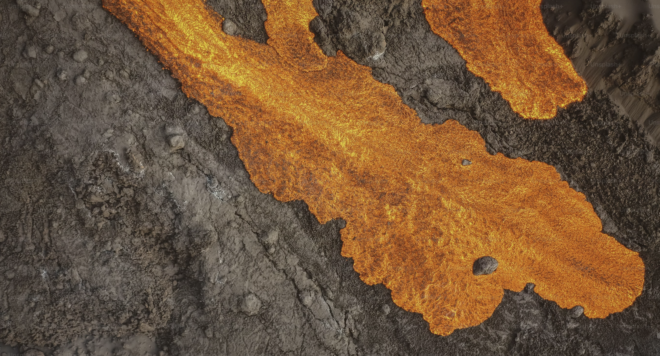
Studying how magma behaves underground could help harness powerful geothermal energy. Scientists from the Krafla Magma Testbed (KMT) in Iceland plan to drill into the magma beneath the Krafla volcano, starting in 2027.
Pressure and temperature sensors will be placed in the first of two boreholes to track changes to the magma, which could help predict volcanic eruptions.
The second will house a test run for a new type of geothermal power station. “[Magma] are the heat source that power the hydrothermal systems that lead to geothermal energy. Why not go to the source?” says Yan Lavallée, volcanologist and head of KMT’s science committee.
Related: Glamping on dead volcanoes in Saudi Arabia
Krafla is one of the world’s most active volcanic areas, where temperatures approach 2,372°F (1,300°C). The greatest challenge to accessing this energy is not having the equipment melt.
Iceland has been harnessing the Earth’s geothermal energy for a while, drilling into underground regions to produce steam from heated water. Ormat from Israel is a leader in this space. Water in a magma chamber inside a volcano isn’t steam, but rather it’s “supercritical” – water so hot and under pressure that it’s not liquid or steam, but that fourth state of matter close to a vapor.
In theory, a magma geothermal plant has the potential to produce at least 10 times the power of a traditional geothermal plant.
According to researchers, Iceland’s ongoing volcanic eruptions may continue on and off for years to decades, providing renewable energy but also threatening the country’s most densely populated region and vital infrastructure.
Related: submerged super volcanoes
The eruptions on the Reykjanes Peninsula have forced authorities to declare a state of emergency, with a series of eight eruptions having occurred since 2021. This southwestern region is home to 70 percent of the country’s population, its only international airport, and several geothermal power plants that supply hot water and electricity.
The most recent eruption in May through June triggered the evacuation of residents and visitors of the Blue Lagoon geothermal spa, a popular tourist attraction, for the third time in more than two months.
Although Iceland sees regular eruptions because it sits above a volcanic hot spot, the Reykjanes Peninsula has been dormant for 800 years. Its last volcanic era continued over centuries, prompting scientists to predict the renewed volcanism to be the start of a long episode.
Under an hour’s drive from the island’s capital city Reykjavík, the eruptions pose considerable risks for economic disruption, and they leave evacuated communities uncertain of a possible return.
An international team of scientists has been watching the volcanoes over the past three years. Analyzing seismic tomography imaging and the composition of lava samples, they’ve uncovered parts of the geological processes behind the new volcanic era. They predict the region may have to prepare for recurring eruptions lasting years to decades and possibly centuries.
The researchers report their findings in a paper published June 26 in the journal Terra Nova. The project included collaborations from the University of Oregon, Uppsala University in Sweden, University of Iceland, Czech Academy of Sciences and University of California, San Diego. The work follows an earlier Nature Communications study of the initial Reykjanes eruptions in 2021.
Some of the risks of tapping into magma for geothermal energy are the risks of creating earthquakes. Sudden changes in flow could endanger operations and there is currently no equipment that can safely handle the excessive heat. Also, magma releases gases like sulfur dioxide (SO₂) and carbon dioxide (CO₂), which could pose local environmental hazards and contribute to atmospheric pollution if not managed properly.
Comments






